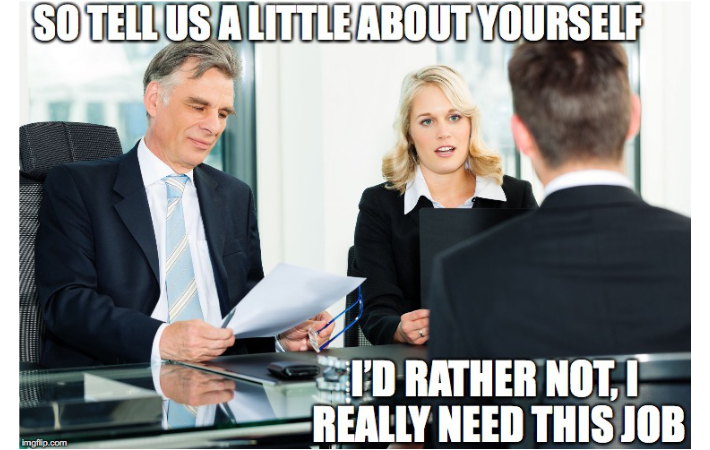I, Sarah, came across this article in my feedly.com account and had to share it. There is so much talk about mental health in our country. Some of it is good, some of it is bad, and at times it feels like it's another way to put a demerit against the youngest generation in the workforce.
Have you noticed anxiety impacting your work space? If so, how has it impacted you and what did you do deal with it?
The article came from Entrepreneur.com and their guest author Srini Pillay.
In a recent Wall Street Journal article, columnist Sue Shellenbarger explained that if your 20-something employee ghosts you -- the CEO -- you shouldn't be surprised: Anxiety may have gotten the better of him or her, as it apparently has for an alarmingly large percentage of that age group -- the one the WSJ called "the most anxious generation."
As director of the outpatient anxiety disorders program at Harvard's McLean Hospital, I find that these statements ring true: I've witnessed how, among the various mental health disorders, anxiety disorders are the most common, and how people who are anxious at work often go on to develop these disorders. Unfortunately, people stay quiet about them at the same time.
According to an American Heart Association CEO Roundtable-commissioned survey, 63 percent of employees in the study diagnosed with a mental health disorder did not disclose this fact to their employers.
Alternately, employers who are aware that their employees are suffering from an anxiety disorder often refer them to employee assistance programs. But this solution isn't ideal: Although 75 percent to 80 percent of midsized companies and 97 percent of large companies offer EAPs, only 6.9 percent of people use them.
You might think they are seeking their own care on the outside instead, but in fact less than half of all people with mental health disorders receive treatment in any given year.
Anxiety is greatest in younger workers
Although anxiety often goes unaddressed and ignored, the tides have recently turned. Young workers are now demanding an increased emphasis on mental health. They are more vocal about it, and they feel that mental health is misunderstood. The Matters of the Mind survey by American University of millennials found that members this group had strong feelings about mental health: People in the study said that those their age didn't know where to go for mental health care and that mental health was especially difficult to talk about.
Compared to other age groups, Generation Z (54 percent) and millennials (40 percent) also have the greatest amount of anxiety. Given the burden of anxiety, lack of access to care and confusion about where to seek help, these age cohorts are more willing to talk about their issues. In fact, the business culture is shifting toward care of issues such as anxiety, as these generations enter the workforce and start their own businesses.
Anxiety has really only been socially recognized and acknowledged since around the time millennials were born. Generalized anxiety disorder and social anxiety disorder were introduced to the Diagnostic and Statistical Manual of Mental Disorders only in 1980. And it turns out that millennials and Gen Z employees experience double the rate of anxiety in the workplace as do other groups.
Suicide is the second leading cause of death in this age group, in fact, and among individuals reporting a lifetime history of suicide attempts, more than 70 percent had an anxiety disorder.
The role of "perfectionism"
While the reasons for this level of anxiety are not clear, we do know that millennials as an age group tend to be the biggest perfectionists, and, as a result, experience a tremendous amount of pressure at work. Given that anxiety is diagnosed, common and lethal in this age group, they are likely to be the ones who tackle the stigma around anxiety in the workplace.
In this regard, the following strategies may be valuable to you for helping your own employees deal with anxiety at work:
1. Introduce mindfulness programs.
In 2019, Ph.D. student Larissa Bartlett and her colleagues examined whether mindfulness was effective for anxiety in the workplace. They conducted a meta-analysis of 23 studies that demonstrated that mindfulness could be effective for stress, anxiety, psychological distress and well-being.
Given those findings, you might introduce a mindfulness program to your employees at work. Hank Ostholthoff, CEO of Mabbly, explained the different ways you could introduce mindfulness in the workplace. He explained that leaders should lead by example, designate time for mindfulness, offer incentives for mindfulness practice, find “culture captains,” explain the benefits of mindfulness and plan for any hurdles should they occur. When you are deliberate about introducing mindfulness in the workplace, you embed self-care and well-being into the culture of your organization.
2. Discourage perfectionism.
A culture of excellence can be more effective than one of perfectionism. Perfectionistic workers tend to be more neurotic and anxious. To discourage perfectionism at work, remind workers that "done" is better than perfect. Encourage excellence, but let them know that they can always iterate.
When people manage their perfectionism, they have to break the cycle of rumination by simply acting. Taking risks can be helpful when encouraged carefully by organizations.
As a business leader you could similarlly get involved by, for instance, rewarding people for submitting their errors to an “Epic Failure” club where participants could talk about lessons learned and how to move forward. This could help your people become less anxious and more productive with their work.
3. Take a break.
What I like to call "strategic mind-wandering" can help employees decrease their anxiety. The reason is that too much focus exhausts the brain. So build unfocus times into your workplace culture to reduce anxiety. During these unfocus breaks, encourage people to do things like go on walks outside, meditate,or identify downward spirals by naming their feelings.
Pip Hulbert, the U.K. CEO of Wunderman Thompson, believes that stress is the enemy of creativity. That's why she introduced 15-minute breaks for the entire company to help employee improve their wellness. Should you too introduce these kinds of breaks, you'll be calling attention to the important need to refuel and to the fact that anxiety is often a symptom of a stressed-out brain.
Clearly, given the large numbers of young people affected by anxiety, up-and-coming business leaders will be tackling this workplace problem in the future. But why wait? It’s worth jumping on to this bandwagon now, to begin to start improving employee well-being and productivity at work today.
The photo with this article is from: Photo by José Martín Ramírez C on Unsplash






